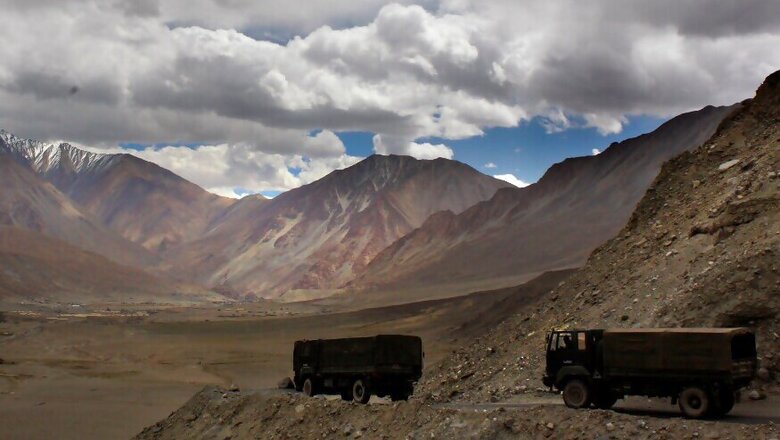
views
In its first detailed statement issued late on Tuesday, the Indian army had said that 17 of the 20 soldiers who died in the clashes at Galwan Valley on the intervening night of June 15 and 16 "were critically injured in the line of duty at the stand-off location and exposed to sub-zero temperatures in the high altitude terrain”.
At least four Indian soldiers are reported to have suffered from hypothermia after falling into the Shyok river from the ledge where the violent confrontation took place.
Experts in the field with the knowhow of the place describe it as 'high-altitude snow desert'. The question being raised since reports of the soldiers’ deaths came out on Tuesday is -- are our soldiers adequately equipped to meet the operational challenges in such a hostile place?
Lt Gen Satish Dua (Retd), who retired as Chief of Integrated Defence Staff to the Chairman, Chiefs of Staff Committee in 2018, said Indian soldiers are equipped adequately but one can't be prepared to beat the sub-zero temperatures of the river at such a high-altitude.
"The Indian army has enough equipment and clothes. We are operating in the higher altitude of Siachen as well. But at such heights, one cannot be trained to beat the cold in icy cold waters. Our soldiers are prepared to live there not to get into active confrontations. The circumstances on the intervening night of June 15-16 were far more hostile," he said.
Explaining the terrain of the place where the confrontation took place, he said the site where the confrontation took place "is at an altitude of 17,000 feet, which is an extremely high altitude. Being deployed in such high altitudes requires at least two stages of acclimatisation. At such high altitudes, one faces shortness of breath, and the lack of oxygen affects one's thought process. Right now the temperature is not sub-zero but that of the river down below certainly is."
Lt Gen Syed Ata Hasnain (Retd), former GOC of the Srinagar-based 15 Corps, in a recent tweet said that Ladakh is not "an easy ground to understand”.
Talking to News18 he said that the Indian army has an expertise in high-altitude warfare such that no army in the world has. "We should remember that when US forces had to train its soldiers in high-altitude warfare, they came to India, and received training from our boys in the Ladakh area. So, our expertise is unbeatable, our acclimatisation process is world class, our equipment and clothing is also quite good. What our soldiers are given there is almost the same as is given to our soldiers deployed in Siachen," he said.
But, he added, there was no way to survive a fall into the icy cold waters of Shyok river, in which Indian soldiers fell during confrontation with Chinese soldiers. "Shyok is a fast flowing river. Its very name means death. Anyone who falls into it freezes to death. There's no escape from it. Indian army's 153 base hospital in Leh is the nodal hospital for all high-altitude sicknesses. We have very well trained medical staff but from that river of death there is no escaping."




















Comments
0 comment